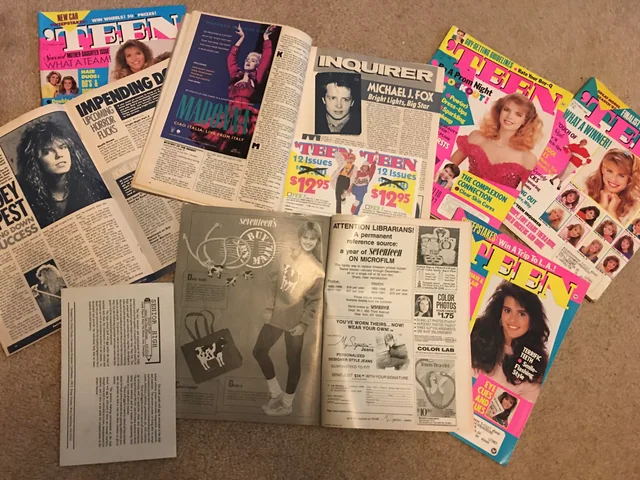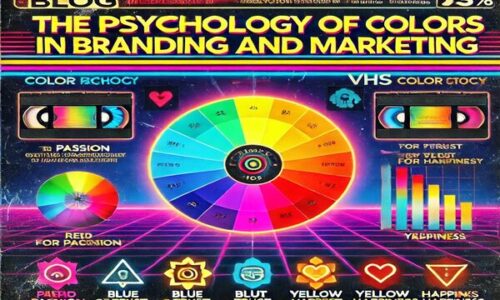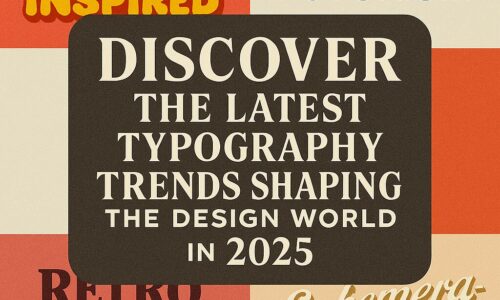
The Evolution of Typography in Digital Media
- Graphic Designer Tips
- digital media, font trends, The Evolution of Typography in Digital Media, typography evolution, visual communication
- February 12, 2025
The Evolution of Typography in Digital Media
The Evolution of Typography in Digital Media
Typography has been an essential element of design for centuries, evolving with technological advancements and artistic movements. In digital media, typography plays a crucial role in branding, user experience, and visual storytelling. The transformation of typography in the digital space has been driven by innovations in technology, web standards, and changing design trends.

The Early Days of Digital Typography
The Early Days of Digital Typography
Before the rise of digital media, typography was confined to print, with meticulous type-setting techniques used in books, newspapers, and advertisements. With the advent of personal computers and word processors in the 1980s and 1990s, digital typography became widely accessible. Early digital fonts were limited in variety and quality due to the constraints of pixel-based displays.
The introduction of TrueType fonts by Apple and Microsoft in the late 1980s allowed for scalable and higher-quality typefaces, providing designers with more control over their typography. As computers became more sophisticated, so did font rendering, improving readability and design versatility.
The Rise of Web Typography
With the growth of the internet in the early 2000s, typography shifted to the web. Designers initially relied on system fonts such as Arial, Times New Roman, and Verdana due to compatibility concerns. However, these restrictions led to a lack of diversity in web design.
The introduction of CSS (Cascading Style Sheets) allowed for better control over font selection, layout, and spacing. Web-safe fonts emerged as a solution to cross-browser compatibility issues, but they were still limited in number. The breakthrough came with the launch of Google Fonts and Adobe Fonts, offering designers an extensive collection of typefaces optimized for web use.
Typography in Modern Digital Design
Today, typography is more dynamic and interactive than ever before. Variable fonts, introduced by OpenType, enable a single font file to contain multiple weights, widths, and styles, providing designers with unprecedented flexibility. These fonts improve website loading speeds and ensure a seamless user experience across devices.
Custom typography has also become a significant trend, with brands investing in unique typefaces to establish their identity. Companies like Google, Apple, and Netflix have developed their own proprietary fonts to enhance brand recognition and optimize readability across digital platforms.
Responsive Typography and Accessibility
As digital media consumption grows across different devices, responsive typography has become essential. Designers now prioritize legibility and adaptability, ensuring that text scales appropriately on screens of all sizes. Techniques such as fluid typography, viewport-based scaling, and CSS media queries allow for dynamic text adjustments.
Accessibility is another crucial factor in digital typography. Web Content Accessibility Guidelines (WCAG) emphasize the importance of contrast, font legibility, and spacing to ensure readability for all users, including those with visual impairments. Designers are incorporating features like dyslexia-friendly fonts, adjustable text sizes, and high-contrast color schemes to improve inclusivity.
The Future of Digital Typography
Looking ahead, the evolution of typography will continue to be shaped by artificial intelligence, augmented reality, and voice interfaces. AI-driven design tools are already generating typography recommendations based on user preferences and design contexts. Augmented reality (AR) and virtual reality (VR) are introducing new ways to interact with text in immersive environments.
In the age of digital transformation, typography remains a fundamental component of communication and design. As technology advances, typography will continue to evolve, offering new opportunities for creativity, accessibility, and engagement in the digital landscape.
#Typography #DigitalMedia #FontTrends #GraphicDesign
Leave Your Comment Here
You must be logged in to post a comment.





The Rise of AI-Powered Graphic Design Tools - Graphic Designer
[…] #AIDesign #CreativeTech […]
Discover the latest typography trends shaping the design world in 2025 - Graphic Designer
[…] #TypographyTrends, #Y2KTypography, #NouveauFuturism, #RetroRevival, #EphemeraTypography, #AITypography, #Design2025, #GraphicDesignTrends, #ModernTypography, #VintageFonts, #BrandingDesign, #TypeDesign, #DigitalTypography […]